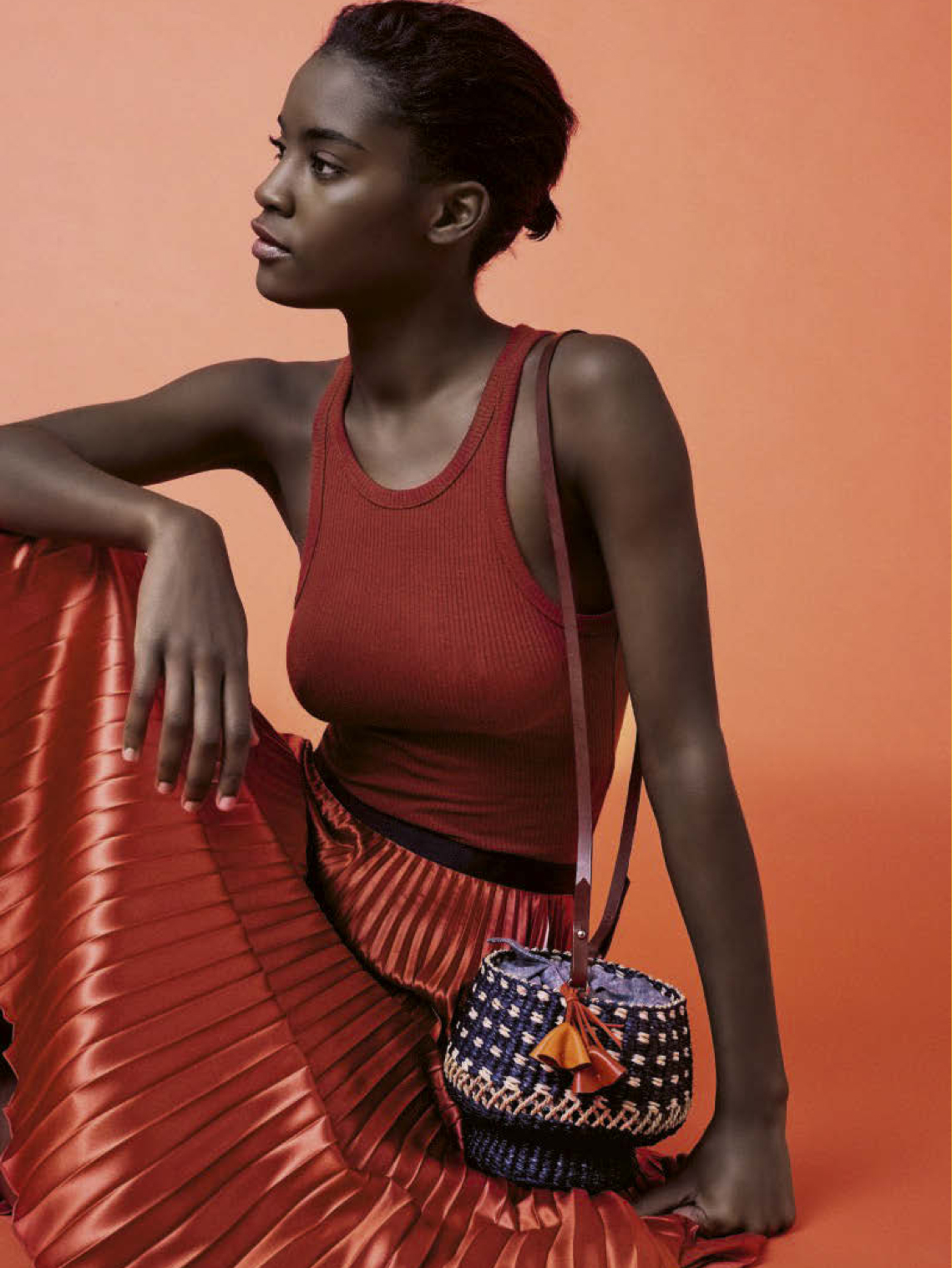Contents
Guide
AFRICA IN FASHION
AFRICA IN FASHION
Luxury, Craft and Textile Heritage
Ken Kweku Nimo
Foreword by Deola Sagoe
Laurence King Publishing
An imprint of Quercus Editions Ltd
www.laurenceking.com/student/
I dedicate this work
to three phenomenal ladies:
my mother Obaapanyin, Adwoa Kwakowa;
my wife, Efua Koufie;
my daughter, Ama Kwakowa Nimo.

First published in Great Britain in 2022 by
Laurence King Student & Professional
An imprint of Quercus Editions Ltd
Carmelite House
50 Victoria Embankment
London EC4Y 0DZ
An Hachette UK company
Copyright Ken Kweku Nimo. The moral right of Ken Kweku Nimo to be identified as the author of this work has been asserted in accordance with the Copyright, Designs and Patents Act, 1988.
All rights reserved. No part of this publication may be reproduced or transmitted in any form or by any means, electronic or mechanical, including photocopy, recording, or any information storage and retrieval system, without permission in writing from the publisher.
A CIP catalogue record for this book is available from the British Library
TPB ISBN 9781913947958
Ebook ISBN 9781529419856
Quercus Editions Ltd hereby excludes all liability to the extent permitted by law for any errors or omissions in this book and for any loss, damage or expense (whether direct or indirect) suffered by a third party relying on any information contained in this book.
Designed by TwoSheds Design Cover image by Kadara Enyeasi

Yana design from Tropical Galactica Surreal collection 2020 by Deola Sagoe.
Foreword
Africa is always in fashion.
This book represents a particular point along the continuum of our appreciation of what Africa means in fashion. We are woven into this continuum as Ken alludes to in the sub-chapter Woven Stories and Ancient Fabrics. Yet we are also sovereign; our personal domains seek definition, perhaps even restitution, as is subtly implied in the sub-chapter Colonialism, (Europes grand imperialist venture in Africa).
Africa in Fashion is an ambitious book. Its size may not immediately signal this but in its slimness is precisely where the ambition lies simultaneously drawing our attention to everything that is put in, as well as everything that is left out. This book does not presume to tell the entire story of Africa in fashion what singular work would dare to state that as its mission?
What this book accomplishes is successfully pulling together a wide array of tributaries of information, into a river of knowledge, which you, dear reader, must have been thirsting for in the first place otherwise, you wouldnt have reached out for this book upon the shelf.
When I was drawn to fashion, I was first seduced by our indigenous fabrics. It felt to me like a strange arrangement had been made among everyone else on Earth to play down, to overlook, what I could see was patently woven magic! It surprised me how taken for granted this treasure trove of resources, African textiles, was. Over the years my appreciation of this magic has never waned. So, for anyone like me, go straight to the sub-chapter A Textile Heritage and read on with a smile on your face!
I am appreciative to Ken for profiling some of the heroes of modern African fashion design in the sub-chapter Generation Couture. They include Shade Thomas-Fahm, with whom I have had the pleasure of collaborating, and Kofi Ansah with whom I had so many deep conversations about where to go next with design we were unfortunately robbed of our plans to collaborate by his passing.
My brand has been synonymous with luxury from the outset, partly because of my laser-like focus on the details in my designs, as well as a personal ethos that luxury exists in the eye of the beholder. And I am glad that more and more cultures around the world are appreciating the African eye!
We are just at the tipping point of what Africa means in luxury so I suggest that Ken dedicate his next project to Africa in Luxury.
Deola Sagoe

Origami triangular-pleated puff blouse and corseted palazzo pants from Season 3 collection 2021 by Duaba Serwa.
Introduction
The universal appeal of fashion is evident in the speed by which the latest styles and trends permeate global markets. Catalysed in contemporary times by disruptive digital media, e-commerce, and integrated supply chain and distribution channels, fashion has become one of the biggest sectors of the global economy. In Africa, the fashion and textile industry is underpinned by a production value chain capable of fostering economic growth and job creation in the context of a bulging youth population, while mitigating the threats posed by fast fashion.
Until the late twentieth century, Africa was confined to the periphery of the global fashion economy, benefiting marginally as the source of raw material and as the terminal market for finished goods. Africas post-independence efforts at leveraging indigenous textile and apparel industries for economic growth have been slow to bear fruit. Yet, despite the endemic challenges, African fashion has thrived. Propelled by vibrant indigenous production and distribution networks, it has weathered decades of subjugation and exploitation to produce some of the worlds greatest designers. Indeed, the twenty-first century has witnessed a surge in Africas creative economy as a generation of designers adopt cutting-edge technology to harness the potential of indigenous production techniques, media and handcrafting skills. Africas rich cultural and craft heritage, together with its abundance of natural and human resources and relative socio-economic stability in recent times, can foster an indigenous industry for the manufacture of high-value and craft-oriented luxury goods.
This volume is divided into three chapters. In , we explore the history of the development of African fashion under the vectors of trade, culture, colonialism and globalization. We focus, subsequently, on its rich heritage in textiles, accessories and embellishments.
In we profile the most prolific African designers operating from or out of Africa beginning with the generation of pioneering designers whose work has stimulated a substantive and global African fashion. We also discuss the exigencies of developing a truly sustainable fashion and luxury industry with international reach.
Finally, the last chapter gives voice to the contemporary designers shaping Africas cultural renaissance. The opening pages are a showcase for a wide range of designers comprising menswear, womenswear and accessories such as leather goods and jewellery. This is followed by interviews with thirteen distinguished contemporary designers. Each of the curated brands, whether established or emerging, is part of the kaleidoscope of creative talent in Africas rapidly evolving fashion industry.


















